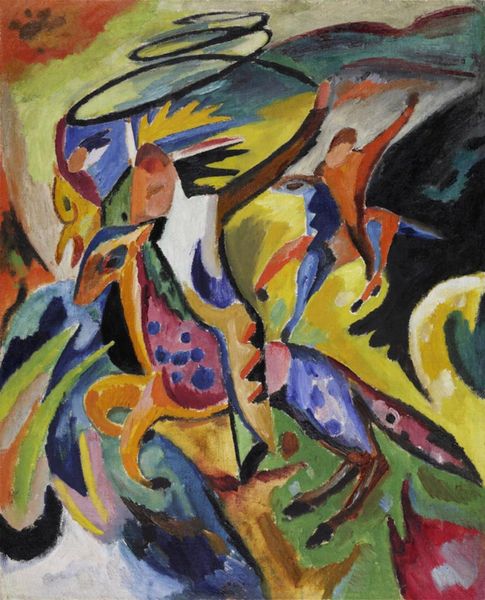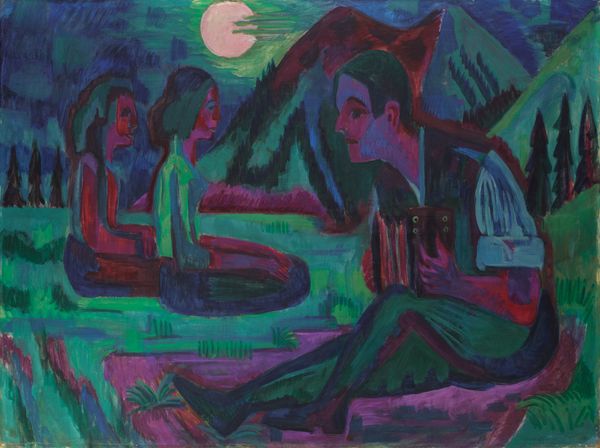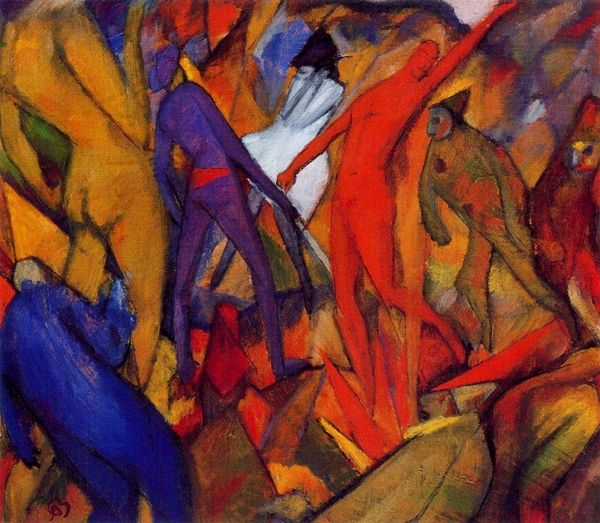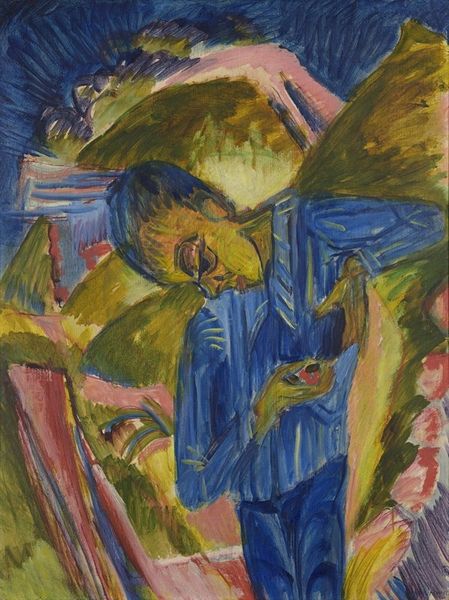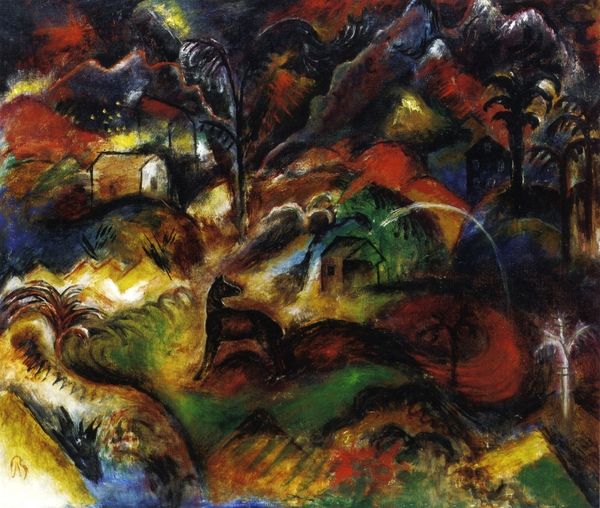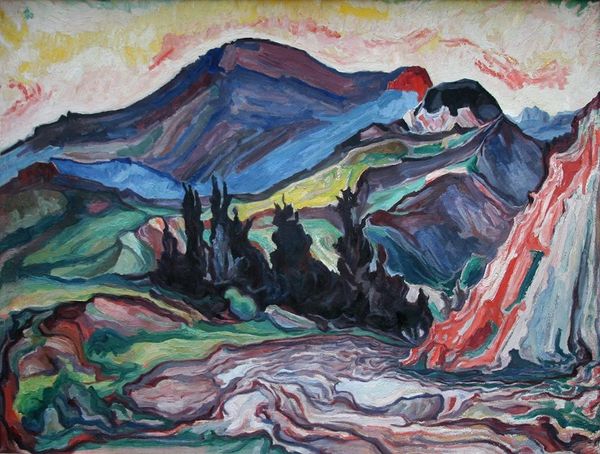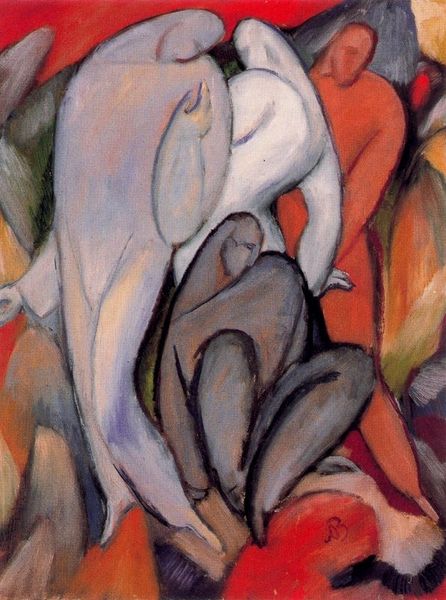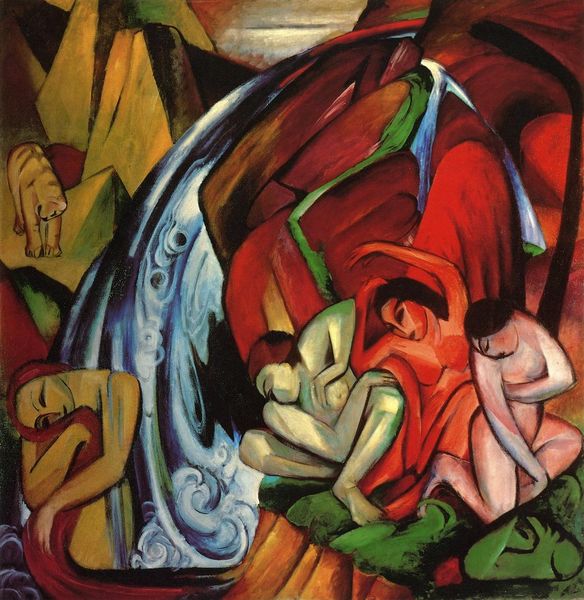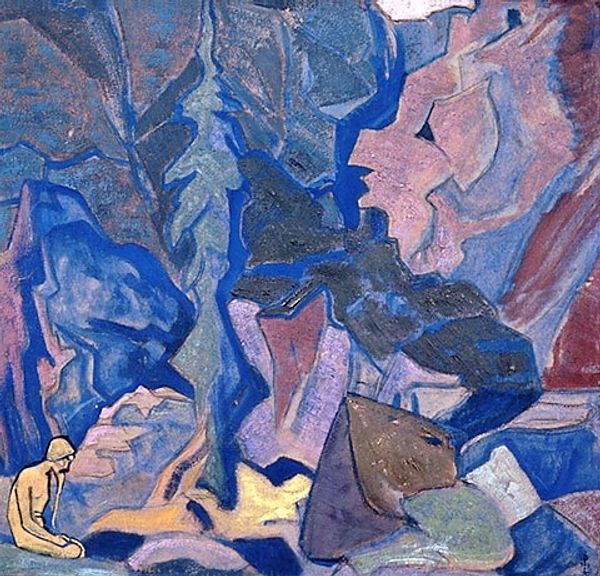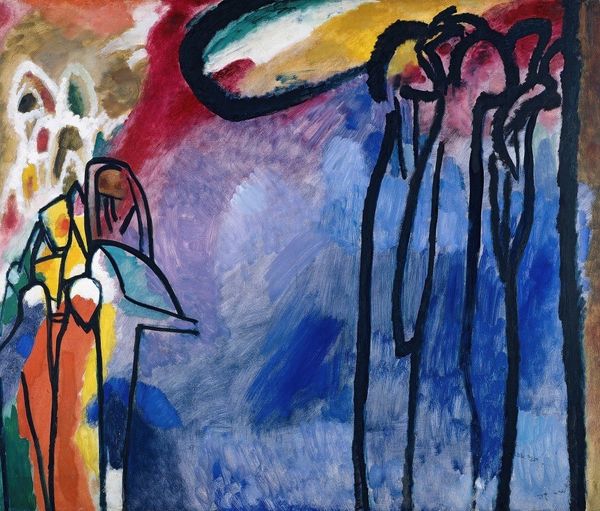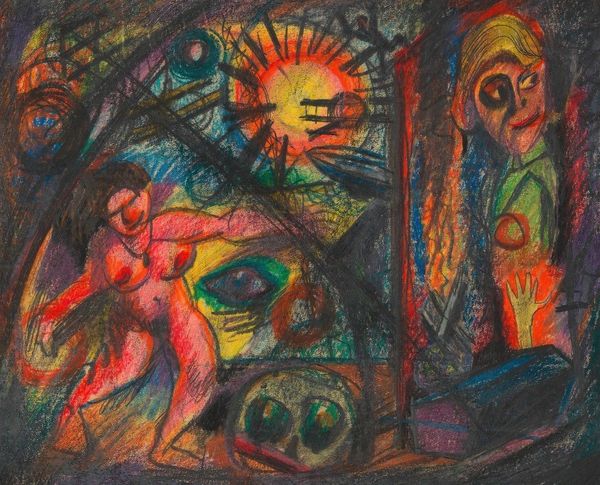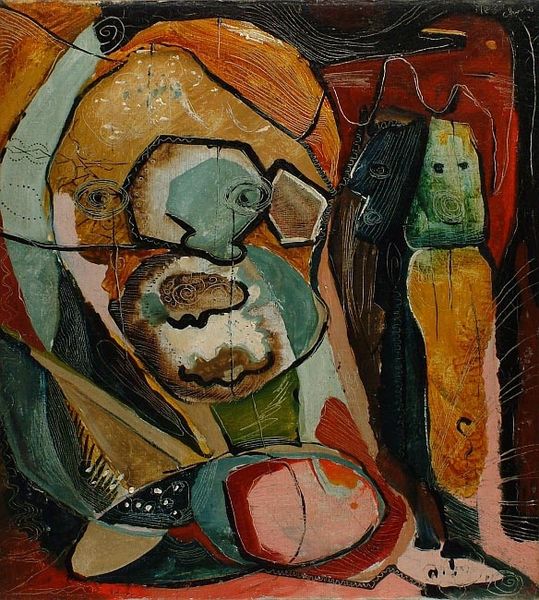
Copyright: Public domain US
Editor: Here we have Albert Bloch’s “Lied I,” an oil painting from 1914. There's such a dramatic use of color and the figures seem caught in a tumultuous landscape. It’s quite evocative. What do you see when you look at this piece? Curator: I see a confluence of Expressionist concerns manifesting materially. Bloch's thick application of oil paint and vibrant, almost jarring, color choices aren’t just aesthetic; they reflect the anxieties and societal upheavals bubbling under the surface of pre-war Europe. Look at how the bodies are rendered, seemingly manufactured from color; the labor is visible. Editor: Manufactured from color, I like that! I guess the material process mirrors some kind of social production? Curator: Exactly! And think about the title, "Lied," which means song in German. Song is created with great skill, and the visual discord is intentional, speaking to a disruption in the harmonious "song" of society, reflected in both the materiality and subject. Where do you think Bloch got the materials to make his painting? Editor: Hmm, well, he would have had to purchase them, so... how does consumerism figure into it? Curator: Precisely! He is an agent embedded in commercial distribution networks, using the labor of others. That's not incidental here; he is an artist critiquing modernity, through his interaction with commodity and visible production, while using the formal techniques he has honed. Editor: That makes so much sense. I hadn't considered the relationship between materials, production, and the overall message of societal disruption. Thank you for the fresh insights into its cultural contexts. Curator: Indeed. Considering art through its materiality brings to light so many unseen connections between creation, labor, and consumption.
Comments
No comments
Be the first to comment and join the conversation on the ultimate creative platform.
